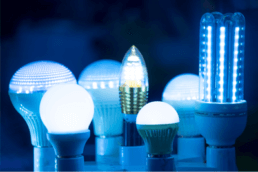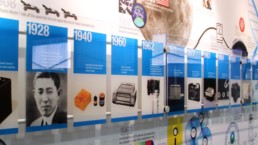Accredited Quality for Colorimetric Quantities
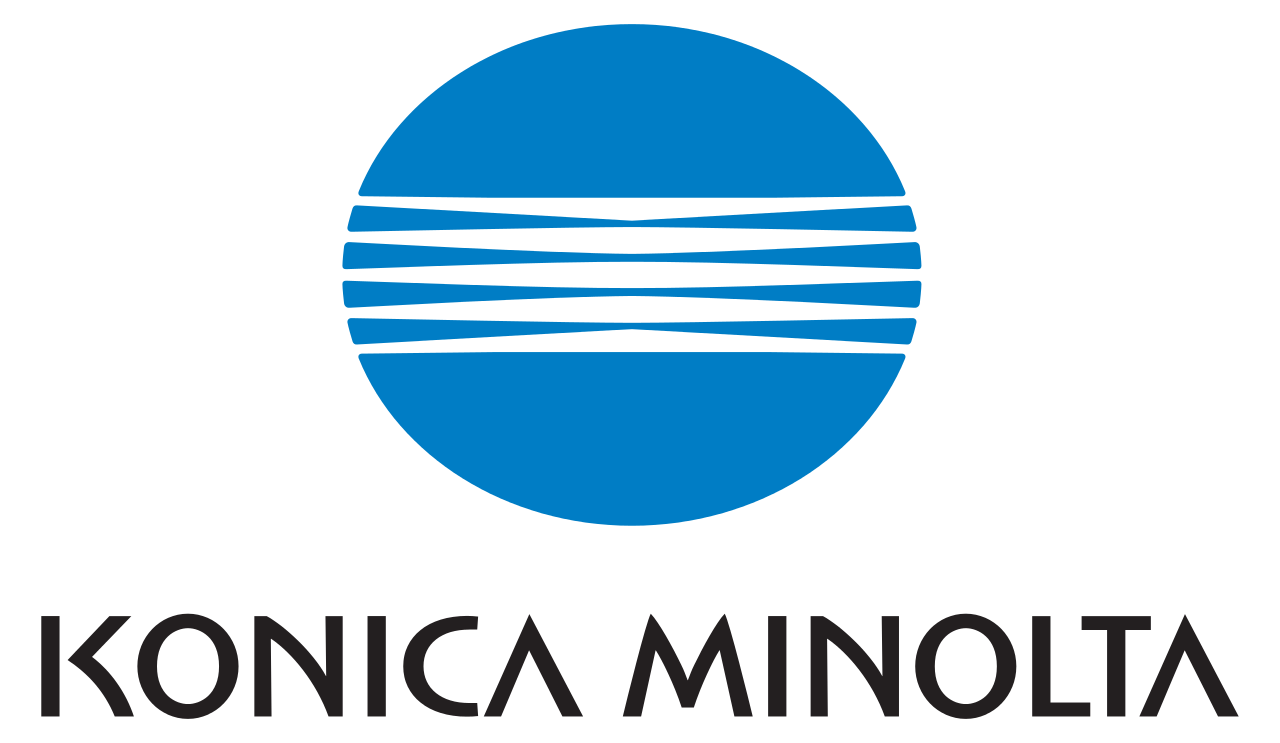
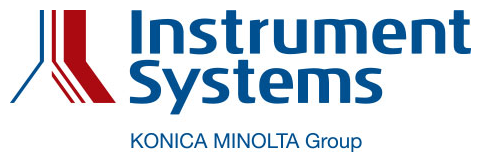
As a premiere at the Light + Building 2018 trade fair, Instrument Systems will be presenting its accredited light measurement solutions for colorimetric quantities with unique measurement accuracy and future-proof service.
Munich, January 2018 – Since 2009 Instrument Systems has received accreditation to DIN EN ISO / IEC 17025 for photometric tests and now offers its certified measurement solutions with the flexible scope of application of Category III. Customers are thus assured of the security of their long-term investment. Recently the company’s test laboratories were also certified to ISO 11664 for the measurement of colorimetric quantities. For determining the latter, Instrument Systems offers measurement solutions with a uniquely high level of accuracy. At Light + Building 2018 in Frankfurt visitors to Stand 4.1/ K89 will be able to experience large-format measuring stations for spectroradiometric and photometric measurement tasks. In combination with the ISP 2000 integrating sphere the CAS 140D high-end spectrometer is ideal for the highly accurate measurement of correlated color temperature CCT and the color rendering index CRI.
The accreditation of test laboratories is enormously important for photometric technology customers. They can be certain that their measuring instruments deliver reliable and traceable results. Following certification of the measuring equipment often used in production, the final products achieve a higher quality and generate greater confidence among customers. With the new Category III “flexible scope accreditation” the Instrument Systems test laboratories can apply new testing and examination methods within the accredited range in the existing portfolio and refer to these as accredited procedures. The accredited quality of Instrument Systems is thus future-proof, for even in the event of reissue of standardized test procedures they can be applied immediately.
In the light of the increasing importance of the assessment of color stimulus, the test laboratories of Instrument Systems have also been accredited to ISO 11664 for colorimetric quantities. This international standard permits the comparison of chromaticity values at different times and at different places. The Instrument Systems measurement
solutions determine colorimetric quantities with unsurpassed measurement accuracy. The traceable measurement uncertainties are only ±0.0015 on the standard chromaticity coordinates of white LEDs and are reliably estimated using state-of-the-art validated Monte Carlo calculations.
Further application setups at the Instrument Systems stand are devoted to the following current topics:
(1) Energy-efficient lighting solutions in buildings call for highly accurate and speedy testing of medium-sized LED modules according to the EU Ecodesign Directive. Instrument Systems presents its LGS 1000 goniophotometer that enables extensive ErP tests for generating test reports with an add-on module of the established SpecWin Pro software.
(2) A live demonstration of the calculation of the unified glare rating will be provided using the smaller LGS 350 goniospectroradiometer, with which the angle-dependent spatial radiation properties of small to medium-sized SSL luminaires and LED modules can be determined. At this measuring station visitors will also have an opportunity to test the new DSP 200 photometer for ultrafast “on-the-fly” measurements of spatial light distribution.
(3) With the stray light corrected CAS 140D Instrument Systems – as a technical pioneer – is the first to offer an array spectrometer that can reliably assess the blue light hazard from light sources within the prescribed limiting values.
The sales engineers of Instrument Systems will be demonstrating measurement solutions at Light + Building, Stand 4.1 / K89.
Further product information can be found at the website of Instrument Systems:
www.instrumentsystems.com
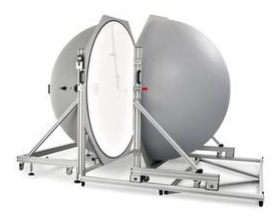
Figure 1: The ISP 2000 integrating sphere combined with the CAS 140D is ideal for measurement of the correlated color temperature CCT and color rendering index CRI.
Company portrait of Instrument Systems GmbH
Instrument Systems GmbH, founded in Munich in 1986, develops, manufactures and markets all-in-one solutions for light measurement applications. Its core products are array spectrometers and imaging colorimeters. The company’s main fields of activity are LED/SSL and display metrology, spectral radiometry and photometry, where today Instrument Systems is one of the world’s leading manufacturers. The Optronik line of products for the automotive industry and traffic technology is developed and marketed at its Berlin facility. Since 2012 Instrument Systems has been a wholly-owned subsidiary of the Konica MinoIta Group.
For further information or photos / illustrations:
Peter Roos, Marketing Manager
Konica Minolta Sensing Americas
Phone: (201) 236-4300
Toll Free: (888) 473-2625
Web: https://sensing.konicaminolta.us/us
Email: marketing.sus@konicaminolta.com
Stray Light Corrected Array Spectrometer Reliably Determines Blue Light Hazard


At Light + Building 2018 Instrument Systems will be presenting its latest stray light corrected array spectrometer CAS 140D for reliable testing of the blue light hazard emanating from white LEDs.
Munich, January 2018 – At Light + Building 2018 in Frankfurt visitors to the Instrument Systems stand 4.1/ K89 will be able to experience advanced measuring stations for spectroradiometric and photometric measurement tasks. With the stray light corrected CAS 140D Instrument Systems – as a technical pioneer – is the first to offer an array spectrometer that can reliably assess the blue light hazard from light sources within the prescribed limiting values. Hitherto only double monochromators were recommended for this task, as an underestimation of the blue light hazard was possible in measurements with a spectroradiometer on array spectrometer basis due to stray light. The CAS 140D avoids this in two ways: The optics and mechanics used in the spectrograph block are optimized with regard to disturbing stray light. Additionally, a unique stray light correction matrix is integrated in the calibration procedure. Both innovations combined ensure an up to now unachieved precision in the determination of the blue light hazard with an array spectrometer.
In conformance with standards IEC 62471 and IEC 62778, extremely high quality requirements are placed on spectroradiometers when used for assessing the blue light hazard from light sources. In addition to the stray light behavior, sensitivity and wavelength accuracy are also relevant, since some of the assessment spectra used have extremely steep gradients. Through a new form of calibration the CAS 140D achieves a wavelength accuracy of measurements below the value of ±0.2 nm prescribed in IEC 62471. The improved mechanical and optical design significantly increases throughput. The stray light corrected CAS 140D thus satisfies the required standard limiting values for examining the blue light hazard and is a low-cost and easy-to-operate alternative to scanning systems.
Further application setups at the Instrument Systems stand are devoted to the following current topics:
(1) Energy-efficient lighting solutions in buildings call for highly accurate and fast testing of medium-sized LED modules according to the EU Ecodesign Directive. Instrument Systems presents its LGS 1000 goniophotometer that enables extensive ErP tests for generating test reports with an add-on module of the established SpecWin Pro software.
(2) A live demonstration of the calculation of the unified glare rating will be provided using the smaller LGS 350 goniospectroradiometer, with which the angle-dependent spatial radiation properties of small to medium-sized SSL luminaires and LED modules can be determined. At this measuring station visitors will also have an opportunity to test the new DSP 200 photometer for ultrafast “on-the-fly” measurements of spatial light distribution.
(3) In view of the increasing importance of the assessment of color stimulus, the test laboratories of Instrument Systems have received accreditation to ISO 11664 for colorimetric quantities. At the measuring station with an ISP 2000 integrating sphere the correlated color temperature CCT and color rendering index CRI can be determined with unique measurement accuracy.
The sales engineers of Instrument Systems will be demonstrating measurement solutions at Light + Building, Stand 4.1 / K89.
Further product information can be found at the website of Instrument Systems:
www.instrumentsystems.com
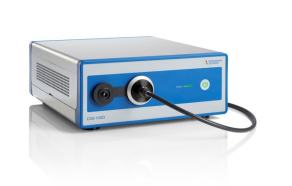
Figure 1: The stray light corrected CAS 140D array spectrometer is ideally suited to the assessment of blue light hazard from light sources.
Company portrait of Instrument Systems GmbH
Instrument Systems GmbH, founded in Munich in 1986, develops, manufactures and markets all-in-one solutions for light measurement applications. Its core products are array spectrometers and imaging colorimeters. The company’s main fields of activity are LED/SSL and display metrology, spectral radiometry and photometry, where today Instrument Systems is one of the world’s leading manufacturers. The Optronik line of products for the automotive industry and traffic technology is developed and marketed at its Berlin facility. Since 2012 Instrument Systems has been a wholly-owned subsidiary of the Konica MinoIta Group.
For further information or photos / illustrations:
Peter Roos, Marketing Manager
Konica Minolta Sensing Americas
Phone: (201) 236-4300
Toll Free: (888) 473-2625
Web: https://sensing.konicaminolta.us/us
Email: marketing.sus@konicaminolta.com
November 2017
|
What are the Advantages of LED Lightbulbs?
As more emphasis is being placed on energy efficiency and environmental awareness, more homeowners are eschewing traditional incandescent, fluorescent, and halogen light bulbs in favor of light-emitting diode (LED) light bulbs to illuminate their homes. According to Bobvila.com, LED bulbs may still be more expensive than traditional light bulbs, but their energy-efficient operation will save you money in the long run.
For a better understanding of just how energy-efficient LED bulbs are, let’s compare their wattage to those of incandescent bulbs. An LED bulb is capable of reaching the same brightness of an incandescent bulb at just a fraction of the wattage. For example, a 7- to 9-watt LED bulb emits the same brightness as a 40-watt incandescent bulb, while a 16- to 20-watt LED emits the same brightness as a 100-watt incandescent bulb. Not only will you spend less on electricity, you’ll also spend less on new bulbs, as LEDs last longer than incandescent bulbs.
Bobvila.com also points out that although LED bulbs were only available in a harsh white color in the past, modern bulbs are available in three different color temperatures – warm white, soft white, and bright white. Warm white tends to be calmer and suited for bedrooms, living rooms, or really anywhere in your home where you just sit and relax. Soft white light is more vibrant and suited for work areas such as kitchens, garages, and basements, while bright white light is typically reserved for outdoor security systems and bright workshops. In the end, Bobvila.com settled on five LED light bulbs which they recommended as the best available – Phillips 60-Watt Equivalent LED, Cree 40-Watt Equivalent LED, Cree 60-Watt Equivalent Daylight LED, Phillips Hue White LED, and Phillips 60-Watt Equivalent Soft White LED.
When it comes to maintaining the quality and consistency of brightness and color temperature of an LED lightbulb, an innovative light measurement solution by Konica Minolta Sensing is indispensable. A handheld instrument such as the CL-200A or CL-500A can measure the color temperature, illuminance, chromaticity, excitation purity, and dominant wavelength of various light sources, and allow for a more efficient and accurate light evaluation process. Discover the difference that a light measurement instrument by Konica Minolta Sensing can make today!
Konica Minolta Sensing Americas to Launch CA-410, A Color Analyzer for Measuring a Wide Range of Displays Including OLED Displays
To Improve Productivity and Enhance Rich Graphic Expression of Evolving Displays
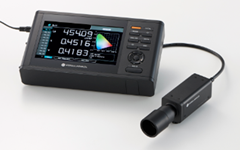 Ramsey (November 17, 2017) – Konica Minolta Sensing Americas (Konica Minolta) announced that it is launching the CA-410, a color analyzer for measuring ever-evolving displays such as OLED displays.
Ramsey (November 17, 2017) – Konica Minolta Sensing Americas (Konica Minolta) announced that it is launching the CA-410, a color analyzer for measuring ever-evolving displays such as OLED displays.
The CA-410 is an optical measuring device used for inspection and adjustment of white balance*1 and gamma*2 at factories producing TVs, smartphone displays, etc. Designed as the successor of the CA-310, which is reputed for its rapid, accurate measurement, the CA-410 similarly offers high-speed, high-accuracy measurement of higher-dynamic-range (HDR) displays, including OLED displays.
Values Provided
1. Accuracy-Guaranteed Luminance Measurement Range 25 Times Wider than the Previous Model for Higher-Quality HDR Displays
Recently, demands for higher-quality images and video have been growing among smartphone users, due partly to dramatic increases in communication speed. In response, manufacturers are accelerating the development of higher-resolution displays with improved contrast ratio and color reproduction, such as HDR displays. As a result, manufacturers of such displays require a color analyzer with a wider measurement range, from extremely low to high luminance.

Example: Measurement of display luminance
Conventional display: 0.01 to 500 cd/m2 HDR display: 0.001 to more than 1,000 cd/m2
With its new sensor circuits, the CA-410 achieves an accuracy-guaranteed luminance measurement range from 0.001 to 5,000 cd/m2, 25 times wider than the previous model. This increased measurement range will help manufacturers to control and improve the quality of high-resolution displays, enabling smartphones and TVs to show higher-quality images and videos.
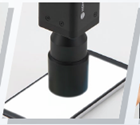 2. Faster Measurement Speeds to Improve Productivity
2. Faster Measurement Speeds to Improve Productivity
The CA-410 can measure extremely low luminance levels of just 0.001 cd/m2 in one second, fast enough for integration into manufacturing processes. In addition, total measurement time is reduced by 30% compared to the previous model by improving sensor capabilities and CPU calculation speed*3. This allows the CA-410 to contribute to higher productivity at factories producing high-resolution displays, such as by reducing the gamma correction process time.
3. Easy Integration into Automated Processes for the Digital Manufacturing Age
In anticipation of the needs of the digital manufacturing age, the CA-410 is designed as a sensor that can be easily integrated into automated manufacturing processes. It allows measurements to be started and performed without manual tasks, and the probe can be connected directly to the computer to save space.
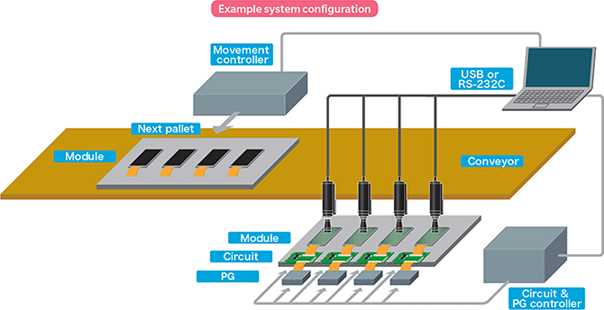
Main Specifications
(The following values are when using a normal CA-P427 probe.)
| Display range | Luminance | 0.0001 to 5,000 cd/m2 |
| Chromaticity | Displayed in 4 digits | |
| Luminance | Accuracy-guaranteed range | 0.001 to 5,000 cd/m2 |
| Accuracy (for white)* | > 0.001 cd/m2: ±9% > 0.01 cd/m2: ±2% > 0.1 cd/m2: ±1.5% |
|
| Chromaticity | Accuracy-guaranteed luminance range | 0.01 to 5,000 cd/m2 |
| Accuracy (for white)* | > 0.01 cd/m2: ±0.003 > 0.1 cd/m2: ±0.002 |
|
| Accuracy-guaranteed measurement speed | Lvxy (AUTO) | > 0.001 cd m2: 1 time/sec > 0.15 cd/m2: 5 times/sec > 2 cd/m2: 20 times/sec |
| Interface | USB 2.0, RS-232C | |
| *Measured under Konica Minolta’s standard light source (6500K). | ||
Click here for futher CA-410 product information.
Konica Minolta’s Sensing Business and Optical Systems for Industrial Use Business
Konica Minolta’s sensing business started with the development of a built-in exposure meter for cameras. In the 1960s, the company released standalone exposure meters and has since been offering products and services for light and color measurement, such as illuminance meters, spectroradiometers, and spectrophotometers, for more than 50 years as one of the leading companies in this field. Konica Minolta has also been working with public organizations responsible for setting industrial standards around the world and supporting industry with its optical measuring technologies. In particular, the Color Analyzer series which the company has been offering and evolving over the past 35 years are now recognized as the de-facto global standard in the area of quality control of TVs and are used by the world’s major display manufacturers for a variety of purposes, including the inspection of smartphone and OLED displays.
As part of its SHINKA 2019, the Medium-Term Business Plan announced by Konica Minolta in 2017, the company is committed to carrying out strategies concurrently in three business areas—core business, growth business and new business—in its Industrial Optical System Business, which combines the company’s Sensing Business with its other resources.
In the core business for sensing, Konica Minolta seeks to capture a greater share for light-measuring products by capitalizing on the growing demand for OLED displays and other market changes, and for color-measuring products by developing new product applications for the automobile, food and building-material industries.
In response to increasing automation at production sites and the growing importance of data utilization, the growth business strategy aims to combine the visual surface inspection technology held by Radiant, a company acquired by Konica Minolta in 2015, with existing optical measuring technology to provide turnkey in-line inspection systems, thereby achieving high-added-value, high-profit businesses.
For new business, Konica Minolta will leverage its sensing and image analysis technologies to build high-added-value products ready for the next generation in three categories: digital manufacturing, Quality of Life solutions and status monitoring solutions.
Konica Minolta will continue evolving so that it can better anticipate the needs of not only its customers in the manufacturing industry but also end users, and offer quality products for the benefit of society.
*1: White balance is the process of adjusting the light intensity ratio of light in the three primary colors - red, green and blue – for accurate reproduction of white.
*2: Gamma is a measure of tonal response. Gamma correction makes the brightness and color of the black and white halftone appear more natural and smooth to the eye.
*3: Based on gamma measurement simulation compared to CA-310 under Konica Minolta’s test conditions (for 64 measurements). It excludes display startup time and wait time.
Which Type of Laptop Screen is Right for You?
Unless you use your laptop for high-end tasks such as graphic design, video editing, or gaming, you may not realize the great variety of display screens that are currently available to consumers. Whether it’s resolution, brightness, color quality, or refresh rate, there are many factors that go into producing a vibrant, high-quality display screen, and even an undiscerning eye can tell the difference between a great display and a poor one. So which laptop screen is the right choice for you and your needs? Laptop Magazine has a few recommendations.
The resolution of a laptop display is dependent upon how many pixels the screen has. Most laptops come with low-resolution screens made up of 1366 x 768 pixels, but there are laptops with high-resolution 1920 x 1080 screens available for as little as $349. Unless you’re only interested in buying a particularly cheap laptop, there’s no reason for your display to have a resolution of any less than 1920 x 1080. But be warned – the higher the resolution, the shorter the battery life.
Another option to weigh is brightness and color quality. Brightness is measured in cd/m2, and Laptop recommends 250 cd/m2 as the ideal amount – it’s bright enough to make colors pop, but an overly luminous screen can lead to a washed-out display. Color quality can be determined by the sRGB gamut, with the best laptops capable of reproducing over 95 percent of colors represented in the gamut and many actually exceeding 100 percent. If color quality is extremely important to you, be on the lookout for OLED (organic light-emitting diode) screens, which offer the most colorful displays.
To maintain a consistency of quality through every display screen they produce, laptop manufacturers often apply the innovative display measurement technology from Konica Minolta Sensing. Industry-leading instruments such as the CA-410 Display Color Analyzer, CA-2500 2D Color Analyzer, and DTS 140D Display Test System offer highly precise measurements of the color and light qualities of display screens, and assist manufacturers in creating a more visually satisfying product. Discover the difference that the display measurement technology from Konica Minolta Sensing can make today!
Can Colored Light Affect Our Mind and Body?
In a previous blog post, we explored the impact that blue and red lights have on our sleep patterns. Although blue light tends to disrupt our sleep while red light allows us to sleep more deeply and restfully, these effects seem contrary to how these light types influence us physically and psychologically. According to a color science professor at the University of Leeds, blue light actually decreases heartrate and has a calming effect, while red light increases heartrate.
This physiological change can be attributed to the hypothalamus, a part of the brain that secretes the hormones responsible for our body’s temperature, sleep patterns, and hunger, among other things. When light enters our eyes, retinal ganglion cells send signals to the hypothalamus to secrete these hormones, and the amount it secretes is dependent upon the color of the light.
Due to the calming effect of blue light, there’s reason to believe that it can also make people less impulsive. Back in 2009, blue lights were installed in some Tokyo trains stations in an attempt to reduce incidences of suicide. Although there is little scientific evidence to support the claim that blue lights specifically reduce impulsivity, suicides nonetheless fell by 74% in the Tokyo train platforms where these blue lights were installed. Inspired by these promising results, some British train stations subsequently installed similar blue lights.
To get these lights to radiate the most calming and effective shade of blue, highly accurate light and color measurement instruments such as those offered by Konica Minolta Sensing are essential. With an innovative luminance and color meter like the CS-150 or CS-160, analyzing light and color, meeting light standards, and maintaining consistency throughout an assembly line is simpler than ever before.
May 2017
|
Light & Display Measurement Instruments
Konica Minolta uses cutting edge technology for light measurement. We hold our instruments to the strictest accuracy and quality from spectroradiometers used in the laboratory, to handheld light meters used in the field. Konica Minolta has a wide range of products well suited for comprehensive light and display measurement. Our wide lineup of measuring instruments makes us one of the market's leading performers.
The Natural Consequences of Unnatural Light
Picture a suburban street at midnight, pitch black except for a dozen or so suspended glowing orbs casting a cone of light around them. This is a common scene pretty much anywhere; electric street lights have been around your whole lifetime. As far as human technology goes, these have little impact on an ecosystem, right?
But a little impact can still be a big deal.
Aside from attracting moths and other flying insects, street lamps and artificial light can influence an environment’s food chain in ways we never anticipated. A recent study from the University of Exeter in the UK examined the impact of both LED light and sodium-vapor light—which output white and amber light, respectively—and how they affected plant and insect life in a controlled environment.
The subject was the pea aphid, a sap-sucker that feeds on plants like greater bird’s foot trefoil. Artificial light reduced flowering in the trefoil, the study found, depriving the aphids of their primary food source.
“Many direct effects of night-time artificial light on plant and animal species have been documented, and there is a growing body of evidence concerning the physiological and behavioral impacts of light pollution,” the study concluded.
Of course, these are not the only effects artificial light has on various species of animals—not by a long shot. In the recently aired Planet Earth 2, the documentary captured footage of turtle hatchlings in Barbados drawn to street lamps they mistook for the shimmer of moonlight on the ocean, their intended destination. Many of the poor hatchlings were crushed by traffic on a busy roadway, or trapped in sewage drains, because of the siren’s call of artificial light.
Nocturnal animals also suffer from these unwanted nightlights, as they suddenly don’t know what time of day it is. Birds that travel by night rely on moon and starlight to navigate, and millions die every year striking into lit-up structures, or because urban light confused their migratory patterns and caused them to leave too late or early in the season.
Improperly measured, light can wreak havoc on an ecosystem. The University of Exeter study used spectrophotometers to measure the impact of street lamps on roads at night in Cornwall. It goes to show the right equipment can be a game-changer in how we learn about the way we affect our environment. Illuminance spectrophotometers like the CL-500A will continue to play a significant role in creating a brighter, and more eco-friendly, future.











